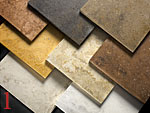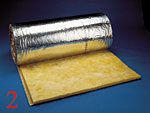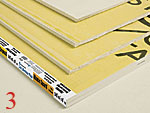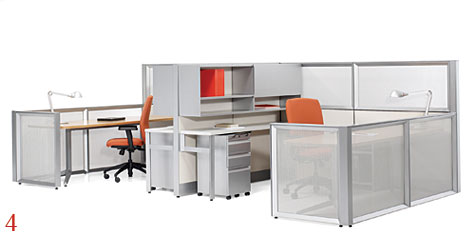(Mis)Understanding Green Products
A benefit to embracing Cradle to Cradle has been that it practically ensures the products will comply with any other standard. For example, Herman Miller has been testing its products for low emissions of Volatile Organic Compounds (VOCs) for decades, but now certifies them against the Greenguard Air Quality standard. This is an ANSI-accredited, consensus-based standard provided by the nonprofit Greenguard Environmental Institute (GEI), which is exclusively affiliated, though independent from, the Air Quality Sciences testing lab (AQS). Herman Miller also participated in the development of another indoor-emissions standard by the Business and Institutional Furniture Manufacturer's Association (BIFMA). "I don't know which one will shake out in the long run, but both have credibility because they are recognized by the USGBC," says Murray. An industry leader, Herman Miller has resources to not only push the market toward specific standards, but also to cover the short-term certification bases.
|
|||||||||
Not every manufacturer can afford every green label. Michigan-based Haworth may be a competitor to Herman Miller in some markets, but it also shares similarly ambitious environmental goals. Aside from Cradle to Cradle certification for its Zody chair, it also worked with London-based mechanical engineer Guy Battle to achieve a Planet Positive certification. Battle's open-protocol program, based on the ISO 14025 standard for environmental labels and declarations, tracks carbon emissions along the supply chain of a product, accounts for them as credits, and then passes those credits to the end user. Someone purchasing a Zody chair then must invest in a renewable-energy project that would offset 110 percent of those emissions credits. "You have to keep in mind that this is an emerging market," Battle says. "The key issues are going to be transparency, accountability, and honesty, so we're taking our time to ensure our protocols are rigorous."
MBDC is aware of the challenge that lies ahead for Cradle to Cradle. In September 2007, MBDC announced a collaborative relationship with the influential architectural materials sources company Material ConneXion, geared toward helping companies develop more sustainable materials and products. Steve Bolton, MBDC's manager of business development, says they haven't made a decision about turning Cradle to Cradle into an open standard that people could certify against outside of MBDC. "A consensus-based standard is valuable in that you are bringing people together to create it, but it could be watered down in the end because you are trying to make sure anyone can meet it," Bolton says. "All of our criteria are widely accepted in the scientific community and typically go beyond what is stringent for any authoritative body."
Get the third party started
Product certifications, expressed with labels, mostly break down in three ways: first party, second party, and third party. First-party certification generally means the product manufacturer set up and then tested against the conditions that supposedly qualify the product as green. SC Johnson's new Greenlist program is an example of a first-party program, as the claims represent SC Johnson's own investigations of its products based on a system of its own design. Regardless of the merits of the manufacturer's program-and to be fair, SC Johnson has a comprehensive environmental policy that puts many companies to shame-most architects working in sustainability distrust first-party labels. Second-party labels are more of a gray area, since these are often based on consensus standards established by an industry's trade organization. For example, the Carpet and Rug Institute's Green Label Plus is a second-party label. Third-party labels, on the other hand, often come from a range of organizations outside of the industries seeking certification. The Forest Stewardship Council (FSC) is a well-known third-party certification and label for sustainably managed forests and timber supply chains. LEED recognizes FSC, but doesn't recognize the Sustainable Forestry Initiative (SFI), which is administered by the timber industry. However, SFI certifications are undertaken by independent third parties, such as PriceWaterhouseCoopers, since standards development is usually separate from certification. Other third-party programs include the aforementioned Energy Star and Greenguard, as well as California Gold and Scientific Certification Systems' Sustainable Choice and Indoor Advantage Gold.
All of this can get very confusing, very fast. So, let's return to our carpet example. If you needle down to the fine print in many of the labels and certifications for sustainable carpet, they often rely on only a few real standards. On the VOC emissions side, the Carpet and Rug Institute (CRI) based its Green Label Plus on California's Collaborative for High Performance Schools (CHPS) Section 01350 requirements for indoor-air-quality testing standards. SCS's Indoor Advantage Gold program for carpet is based on Section 01350, too. The limits for VOC emissions in NSF 140-the broader sustainable carpet standard SCS can certify against in its Sustainable Choice program-also refer to Section 01350. If you see a pattern here, it's that three certification programs for carpet all rely, in part, on an emissions standard developed by the State of California for public projects. While California helped develop NSF 140, it ultimately felt the standard wasn't stringent enough for emissions, which is why the state published a revised standard, California Gold. NSF 140 is organized like LEED, with different levels of compliance for Silver, Gold, and Platinum. Since California Gold is now identical to NSF 140 Platinum, it will be phased out in a year.
"There's no question the state has used its purchasing power to motivate change in the marketplace," says Dan Burgoyne, an architect who works as the sustainability manager for California's Department of General Services. Although Burgoyne knew there were no carpets certified to NSF 140 Platinum months before it went into effect in September 2006, by the time the deadline rolled around, there were close to eight products certified and on the market. "We put a lot of effort into the carpet standard and probably won't be able to put as much into the others," he says, though he adds the state is working with BIFMA on sustainable office furniture and with Green Seal on sustainable cleaning standards. NSF 140 has been a good model for other standards, Burgoyne says, because it's a multi-attribute standard that looks at product development, manufacturing, use, and end use.
No end in sight
It's likely the next decade will be filled with new standards and certification labels, giving architects little relief. Marilyn Black, founder of Georgia-based Greenguard and AQS, sees no sign of consolidation any time soon. "I certainly don't see the government in a leadership role of trying to bring this together," Black says. "From my perspective, some of the leading programs need to take a proactive step to focus the industry." TheGreenTeam's Meadows agrees, but she thinks market competition will increasingly come into play. "Certifications and labels are products, so you have to ask which one has more credibility, is least expensive, and most adaptable," she says. "I wouldn't want to say the only way to do things is with ASTM or ISO or LEED because competition is not a bad thing. At some point there are going to be clear winners."
Back in California, SCS's Rhodes still considers life-cycle assessments the missing ingredient in many of these new programs, especially since it allows you to make incremental improvement in larger issues affecting sustainability. And he doesn't see a "super-label" for green products on the horizon. "When you get to the product level for certification, most likely there are going to be trade-offs. There is no magic green bullet," Rhodes says, suggesting that creating standards an industry can easily meet won't do much to change the effects of global warming. "With a life-cycle assessment, some of these materials just don't cause enough impact to show up. We see industrial standards we don't agree with, we have to set our own." With green product certification, that seems to be something on which everyone can agree.












